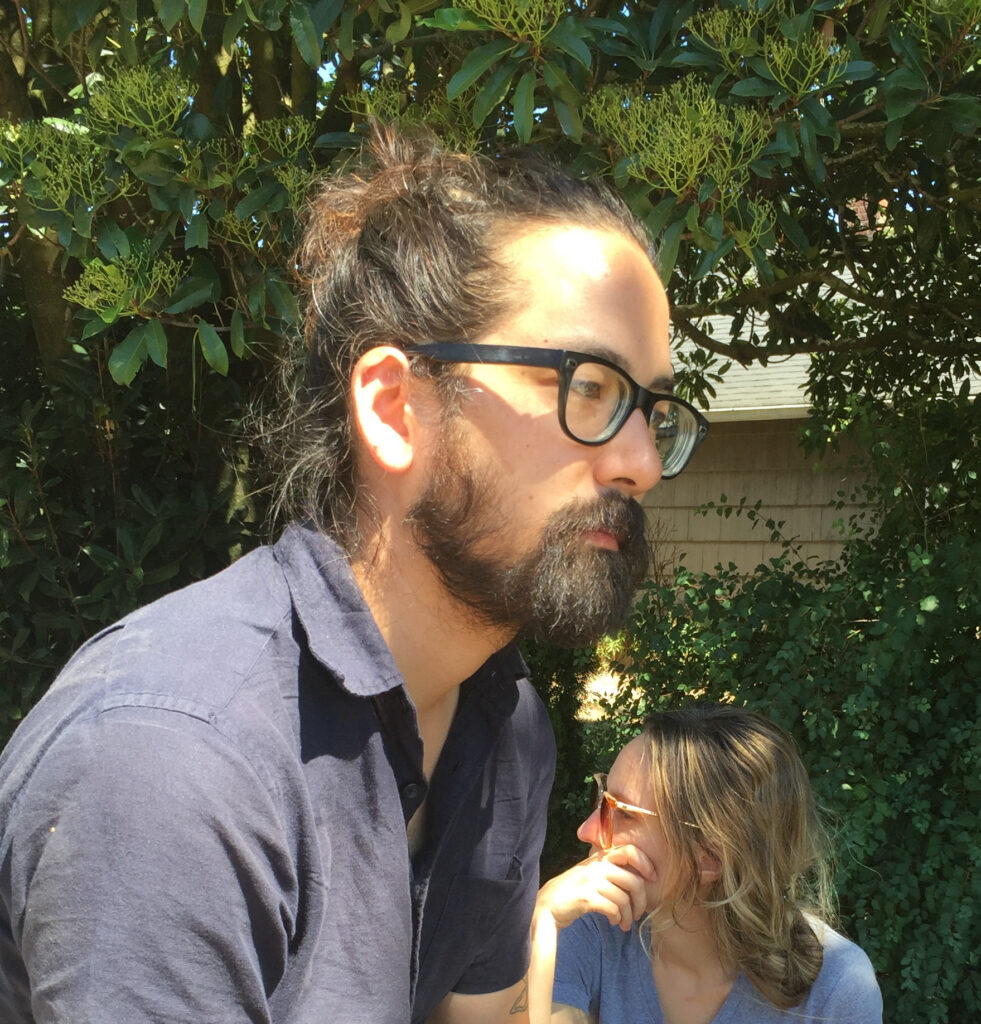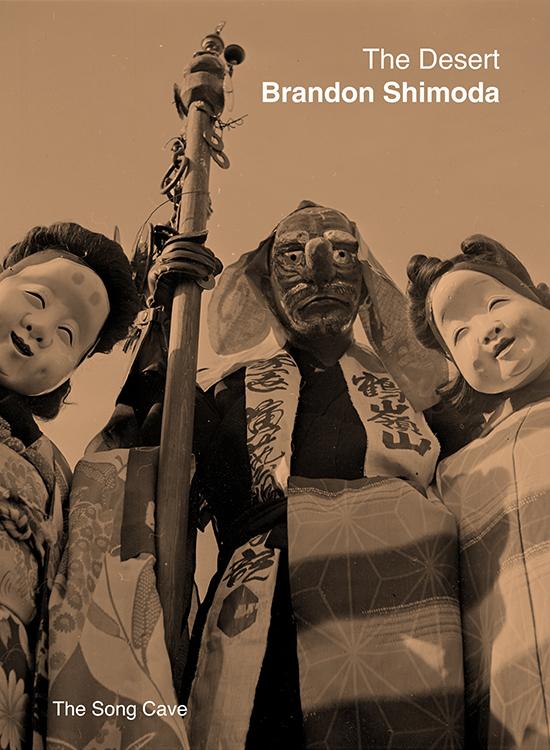
Brandon Shimoda is the author of several books, including The Desert (The Song Cave), Evening Oracle (Letter Machine Editions), Portuguese (Octopus Books & Tin House), O Bon (Litmus Press), and The Girl Without Arms (Black Ocean).
Interview with BRANDON SHIMODA:
How would you describe your relationship with the desert?
In postcards and letters to my friends. I have tried—I’ve been trying—for years to describe my relationship with the desert, and I’m beginning to think it is the ongoing attempt that is, ultimately, the description. (Excerpts from some of my letters to friends about my relationship with the desert are in my book The Desert.) (I think of two of my favorite writers, the Egyptian Jewish poet Edmond Jabès and the Algerian novelist Malika Mokeddem, whose work also seems to describe their relationships with the desert through their ongoing attempts to describe them.) I have lived in Tucson, in the Sonoran Desert, on-and-off since 2011. Much of the dynamism of the desert is a consequence of this particular desert’s overlapping histories of violence (colonization, privation, dehumanization, detention, exploitation, erasure) and the ways in which the present is formed by the linking of arms of all the hungry ghosts materializing out of those histories, which are not history, after all, but ongoing. Seven miles up the mountain north of Tucson are the ruins of a prison labor camp. The prison was established in 1939, closed in the 1970s. Its most active years were during WWII. The prisoners were mostly conscientious objectors, among whom were 46 Japanese American (Nisei) men. The prison was at the vanguard of a movement to exploit prisoners for free labor under the reformist guise of providing job opportunities, work skills. The prisoners built a road to the top of the mountain, into the trees, where it is 20º cooler. One of the prisoners, Gordon Hirabayashi, challenged the 1942 exclusion order which criminalized all Japanese immigrants and Japanese Americans on the west coast and in southern Arizona (leading to their forced removal and incarceration), fighting it all the way to the Supreme Court. He was sentenced to the prison in Tucson, and exists there, today, in the ruins, in the form and sound of grasshoppers. Sometimes I feel that life is posthumous, which, if true, or even by the feeling alone, opens up tremendous possibility within what feels like precipitous death. One of my favorite sounds is of the grasshoppers. Another is the wind in the leaves of palm trees. It sounds, hundreds of miles away from the ocean, like the ocean.

What do you find yourself returning to—deliberately or not?
Flashes of consciousness in the forgetfulness of days, Osip Mandelstam wrote to Anna Akhmatova (on the inside of a book he gave her as a gift). The things I find myself returning to most often are those flashes of consciousness that, even though I might not have been especially conscious of them in the moment, keep returning to me, often clearer, or more complete, than they were in their original moment. The first things that come to mind, right now, without thinking: a camel at a bend in the road, a can of Sprite in the Chouf, ducks in a canal, a fire on the mountain above the canal, a mossy cliff overlooking a bay. Moments and things, even, maybe especially, those with which I had, at the time, a deep relationship, are disintegrating, fast, supplanted by these flashes. Who are the writers who have written memoirs comprised entirely of negative space, and/or what are those memoirs? They are what I want to pre-turn to. Here’s a list of books I read every year … or, that I am always reading (regardless of a year beginning or ending): Yasunari Kawabata’s Palm-of-the-Hand Stories, Etel Adnan’s Sitt Marie Rose, The Collected Essays of James Baldwin, Dot Devota’s The Division of Labor. Lastly, I am always (finding myself) returning to the ruins of Japanese American incarceration, which are as present in the ruins of the incarceration sites themselves, as they are (as I’ve written elsewhere): in the ways the experience of incarceration has been inherited, as well as in the ways that inheritance is being cared for and put to use. (Stories and testimonies. Memorials and exhibitions. How reparations were spent. Dispersed, disappeared. Facial expressions. Hands. The way an heirloom is held.)
How has fatherhood impacted your relationship with poetry?
I just spent three days with my father, who I had not seen, prior to this visit, in eight years. (He lives in Thailand.) In the intervening years, his hair turned white. That is the most indifferent detail I can share. Over the course of the three days, my father told many stories, many of which he told many times, so many that I am beginning to wonder if he might be in the early stages of Alzheimer’s. (His father had Alzheimer’s.) The stories were about being deaf (my father is deaf), being kidnapped (he was kidnapped when I was young), finding an abandoned child in the jungle in Laos (which he did), extortion, murder. Sensational stories, methodically told. He talked about how he, a Japanese American man, has become more Asian over the last decade, though not necessarily more Japanese. Spending three days with him, listening to his stories while staring at his face, recollecting who he was and what he looked like when I was young, I could not help but feel that I was being visited by someone who had already died, or was undead, a ghost. What I recollected, or reconstituted, was the image of a man who seemed, from the perspective of a young child, to be extraordinarily distant and alone, and no more so than from and with/in himself, and that those were the qualities that shaped my understanding of what a father was. I don’t know if fatherhood is what I’m feeling or experiencing, yet. I did have a moment approaching the feeling of what might be fatherhood. It was when my child, who is eight months old, left town with her mother for one week. I stayed home. It was in the feeling—psychological, but mostly physical—of suddenly not knowing what to do with my body, of having forgotten how to move, how to behave, in the absence of my child, that I found myself beginning to feel what it might mean to be a father. Oh, but you asked about poetry!
In a 2013 interview with BOMB magazine you write “I am constantly seeking places that afford time even more than space. So I move through space for time.” Is this still true? And how has your perception of time changed?
This is my tenth and final attempt to answer this question. Each time I have drawn a blank. I don’t know why! The longer I stare at these words—time, space—the further I get from knowing or understanding what they mean. They are triggering in me a kind of aphasia or amnesia, maybe even disbelief. As is the year 2013.
What advice do you give for inhabiting, or inviting, light when writing about tremendous darkness?
To write about tremendous darkness, first. Maybe only. Etel Adnan writes about the luminous qualities of darkness, of night. I mean that. But I also mean the tremendous darkness through which it feels like we are, by force, if not entirely by choice, perpetually falling. That maybe what is important, what is imperative, now, is to put light on reserve, to set light aside, even if momentarily, so that we might confront, in writing, the tremendous darkness, including precisely what is tremendous about it, and without recourse to antidote or consolation.
What artworks do you recommend people experience?
Local murals. Every time I go for a long walk with my child, or otherwise drive around Tucson, I am reminded of the beauty, the expressivity, the surprise, of the city’s murals. I mean especially the murals that possess an organic grace and humility, including those that are easy to miss. There are, for example, so many new, technically perfect yet sensational, overblown, and ugly murals in Tucson, that impose themselves, as arrogant brands, on the landscape. Those are not the murals I mean. I mean the murals that evoke the personality of the streets, of the community that brought the mural to life. Murals that might be imperfect, even incomplete. Incomplete murals inspire so many questions. What prevented the mural from being finished? What was going on in the life of its painter? Did something happen? Were they called or pulled away from the wall? By what? I also mean the murals that have fallen, or are falling, into ruin: by the sun, age, or some other more insidious form of effacement.